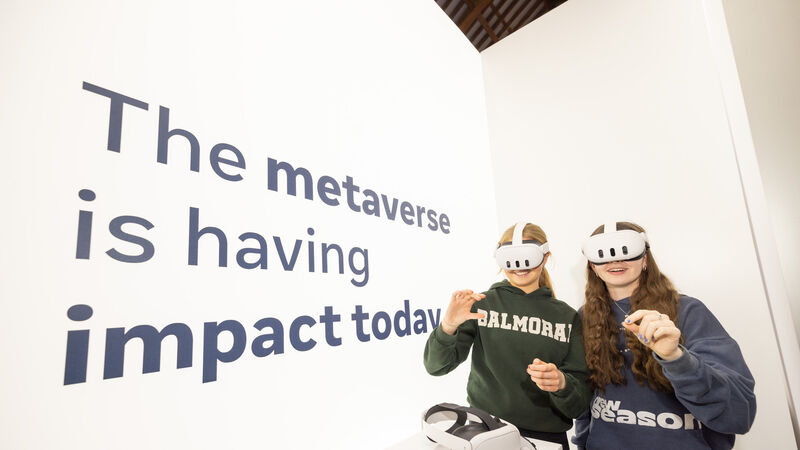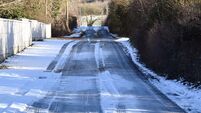Young Scientists assess impact of Macroom bypass on town

(Left to right) Lauren McCarthy (15) and Ava O’Connor (16) from Colaiste Mhuirte, Ennis, Co Clare, taking a virtual trip to some of the world’s natural wonders using Meta’s Quest 3 headset at the BT Young Scientist and Technology Exhibition. For the second year; Meta is sponsoring the ‘Meta Award’ for the project that demonstrates the best use of immersive technology and innovation. Picture: Naoise Culhane
The Macroom bypass has benefitted almost three-quarters of businesses in the town, while most locals say it has exceeded expectations, according to some savvy students at the BT Young Scientist and Technology Exhibition.

The penultimate day of the event was thronged with young students from across the country, both those hoping to win and those with coveted time off school to spectate.
The RDS was a bit more pressurised as judges waded through the crowds, dissecting each project, preparing to crown the overall winner on Friday night.

Among the entrants are Ellie Walsh, Tara Lane, and Leah Bradley from St Mary’s Secondary School in Macroom, Cork, who investigated if the N22 Macroom bypass has benefited the town since it opened in December 2022. .
“Everyone in the area was super excited about it but there were some people who were kind of controversial,” said Ms Walsh.
The students said traffic in the town was “manic” before the bypass prompting them to see how the new bypass might have impacted local businesses and residents 12 months on by surveying over 200 locals.

“Our most interesting result was that 71% of businesses said there has been a significant increase in customers and revenue,” said Ms Bradley, adding that the majority of those travelling through the town now do so with the intention of stopping, “rather than just going to Cork City or Killarney.”
The students found that the vast majority of locals (84%) had their expectations met or exceeded due to less traffic, shorter journey times, noise reduction and “booming” business while air quality in the town has vastly improved with an overall 53% decrease in air pollutants when compared to levels before the bypass opening.

For the locals whose expectations were not met by the bypass, the most common reasons included the limited number of slip roads off the bypass and the absence of a hard shoulder.
Elsewhere, Ciara Galvin and Caoimhín McCarthy from Maria Immaculata Community College in Dunmanway researched the prevalence of vaping among young teenagers. The 16-year-olds set out to find out why so many of their peers vape, and although they have been educated on the health implications of vaping in secondary school, they believe children in primary school should also receive the same.

“Even the first years now in our school, a lot of them are already vaping. I’ve seen it on school buses, bathrooms and outside of school in discos, so they must have been vaping in the summer before first year or in primary school more than likely, and the majority probably received no education on the risks,” Ms Galvin said.

They surveyed 400 students ranging in age from 12 to 18 spanning five schools in West Cork and Cork City. They found that 30% of those have vaped, 64% of whom vape regularly while almost half (47%) received their first vape from a friend. They said they were surprised at the findings as their own perception outside of the survey is that at least 60% of their peers, if not 70%, vape regularly.
Some 38% of participants who vape also smoke cigarettes, with 66% of those vaping before moving on to or trying cigarettes, they found. The students found peer pressure and attractive colours and flavours to be the most common reasons for vaping.

More vapers heard no mention of vaping in primary school at 59% compared with 47% of non-vapers. On the other hand, the students’ main finding was that sport is a protective factor, with more non-vapers playing sport while vapers are more likely to be inactive.














